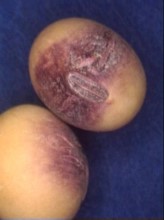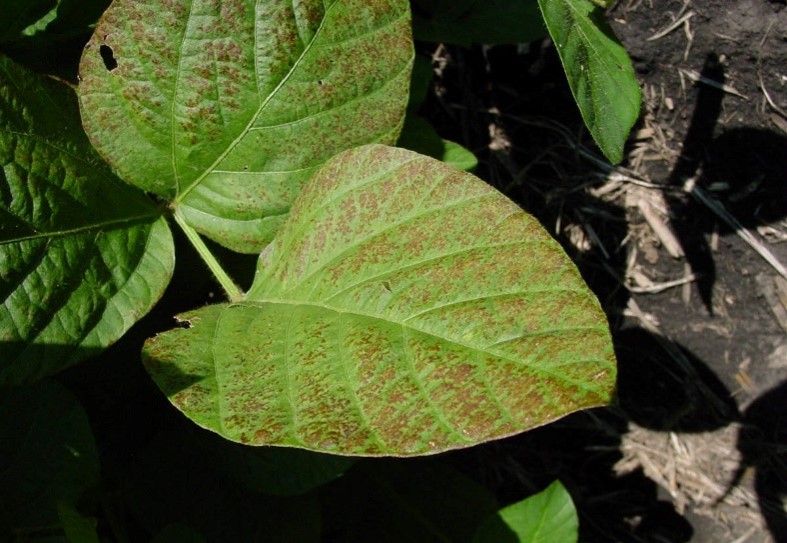

Figure 3. Close-up of soybean seeds with purple seed stain, caused by a fungal disease, Cercospora kikuchii. Infected seeds have a pink-to-purple discoloration on their seed coats.
Management
Rotation and Tillage
- A one- to two-year rotation to corn or small grains will reduce inoculum levels. Other legumes should not be included in the rotation.
- Tillage, where practical, can be used to incorporate and hasten the decomposition of crop residue on which Cercospora pathogens survive.
Genetic Resistance
- Soybean varieties vary in their response to Cercospora, but a high level of resistance is not currently available. Nevertheless, many commercial varieties demonstrate at least some degree of tolerance.
- Resistance to the leaf blight and seed infection stages are thought to be under different genetic control.
Seed Treatments
- The fungicide component of seed treatments can help protect against early infection of seedlings that may result in cotyledons shriveling, turning dark purple and dropping early or plants that die or become stunted.
References
Author: Mark Jeschke
Vol. 12 No. 28 August 2020
The foregoing is provided for informational use only. Please contact your Pioneer sales professional for information and suggestions specific to your operation. Product performance is variable and depends on many factors such as moisture and heat stress, soil type, management practices and environmental stress as well as disease and pest pressures. Individual results may vary. CF200829











